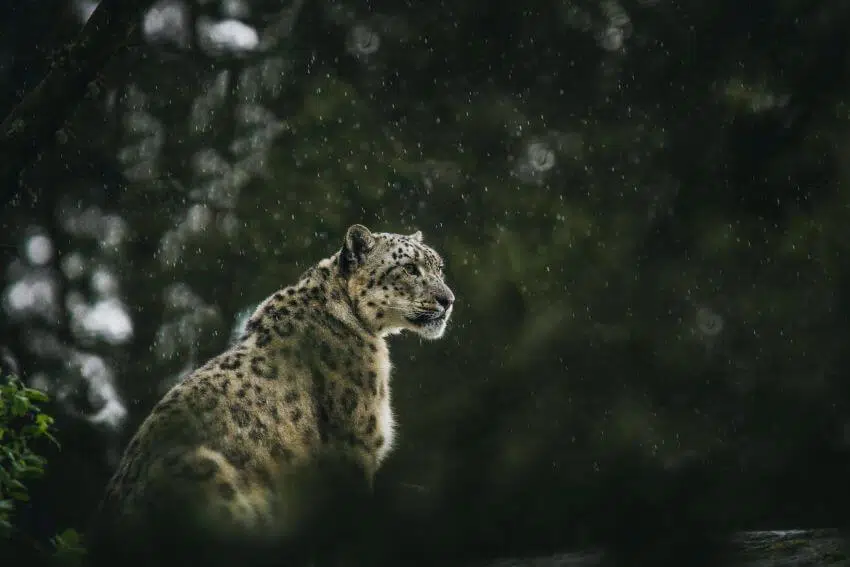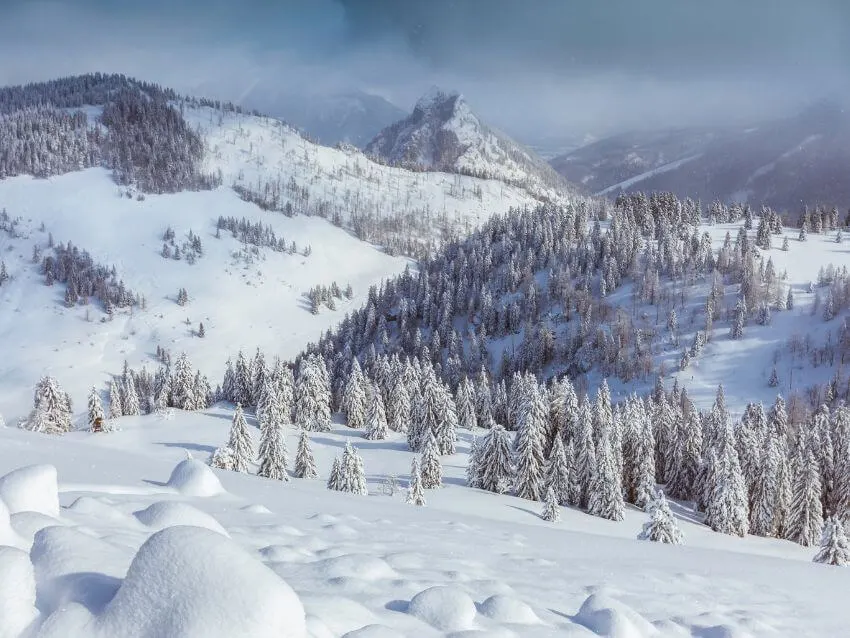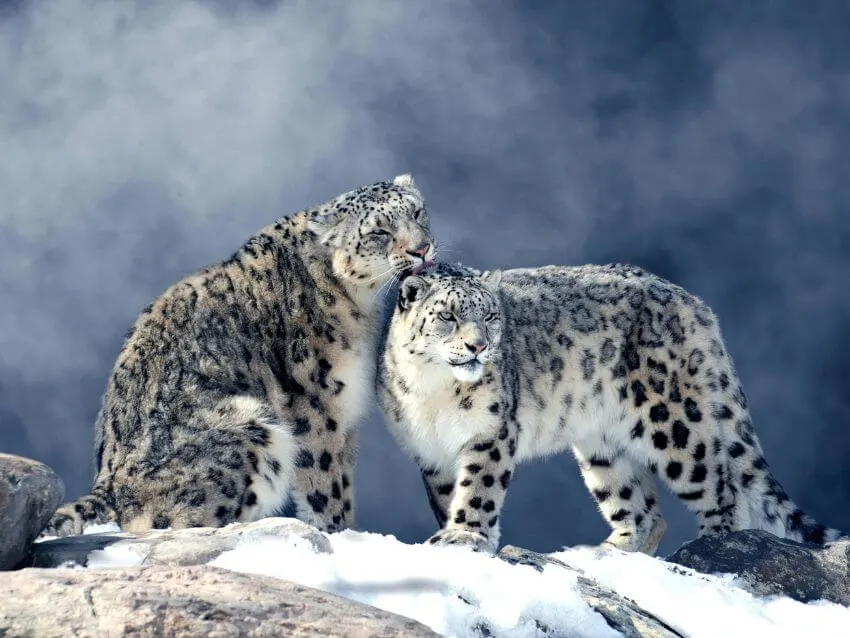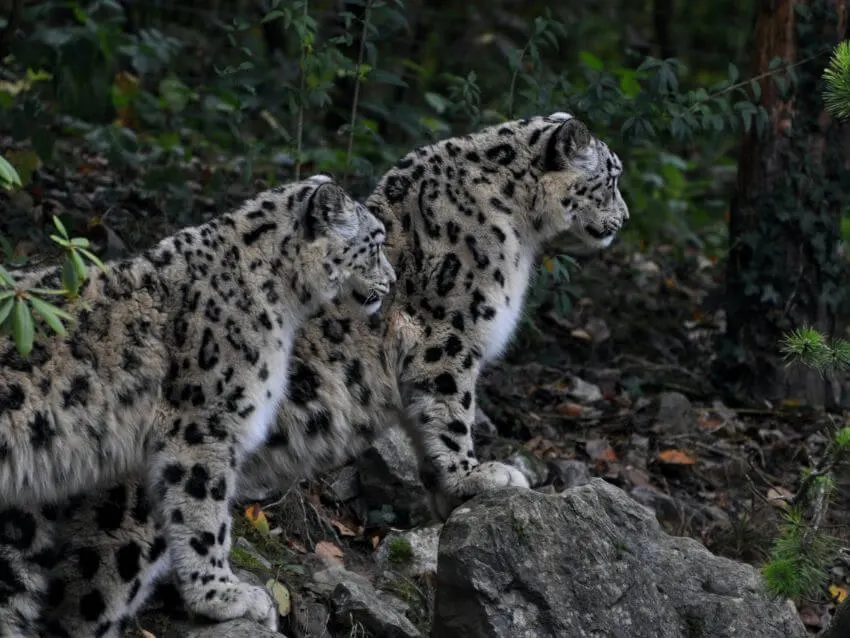Snow Leopards are the most elusive of all big cats, and they have been hunted to near extinction in the wild and they are a threatened species. These leopards are also threatened by poaching, habitat loss, and their low reproductive rate.
- Status: Endangered
- Known as: Snow Leopard, Ounce, Mountain Ghost.
- Estimated numbers left in the wild: 3,500 to 7,000 (estimates are difficult).
Find out why these species are so endangered and what you can do to help.
It is among the stunning creatures that can thrive in a variety of different environments and geographical areas.
They may be found in the mountains, slopes, and jungle-like regions of Asia, but they will occasionally migrate to other areas to forage or flee conflict.
Snow Leopards have been rapidly decreasing in number due to skin and fur poaching, but there are conservation efforts underway to help these leopards survive.

Snow Leopard is an animal that has many unique traits which make it more susceptible to poachers than other animals.
Leopard fur is used as trimming or decoration on garments made with expensive furs such as mink coats because its light color blends well with them; Their skin is made into boots, gloves, hats, and other luxury items.
Description
Leopards are beautiful animals and a Panthera species that can survive in a variety of different climates and geographical regions.
Snow Leopards live in the mountains, slopes, and jungle-like regions of Asia. Leopard populations have been rapidly declining due to poaching for their fur and skin, but there are conservation efforts that help these creatures live on.
Anatomy and Appearance
The magnificent beast is a medium-sized great cat, weighing 27 to 54 kilograms and measuring 1.2 to 1.5 meters, whose thick, luxurious coat of pearly grey fur bears black rosettes. Males are roughly 30% larger than females of the iconic species.
These leopards live high in the Himalayas and other mountains of Central Asia, hunting mountain animals like blue sheep, Asiatic ibex, hares and marmots, game birds, and occasionally domestic animals such as goats.
The leopard has many adaptations to its lofty habitat, including its thick, soft, warm fur and specially enlarged paws.
The animal’s paws are large enough relative to its weight to serve as snowshoes, keeping it from sinking too deeply into heavy snow.
The fur-covered feet where their paws are also completely fur-covered for better insulation. The top predator and its nasal cavities are enlarged to process thin, cold air better, giving its forehead a distinctive domed look.
Snow leopards are not only beautiful but are well adapted to their rocky terrain and high mountain ecosystems. Their strong legs can propel them in leaps of up 10 meters, six times their own body length.
They prefer to attack from ambush, charging their prey at close range such as blue sheep, and bringing it down quickly rather than after a chase.
The thickly furred tail of a leopard gives additional balance while running and leaping and can also be wrapped over the animal for additional warmth during sleep.
These solitary animals have small litters of 2 to 3 cubs.
Location
These great large cats are found throughout main Central Asia’s high mountains ranges. China’s Tibet region holds a relatively high population, and animals are also found in India, Nepal, Russia, Pakistan, Tajikistan, Uzbekistan, Myanmar, Kazakhstan, Bhutan, and Afghanistan.
They are mountain creatures found high in the winter cold, dry, snowy environs of the highest mountains at typical altitudes from 3,000 meters to 6,700 meters.
See Related: Environmental Organizations in India
Snow Leopard Habitat

Snow Leopards are found living in the mountains, slopes, and jungle-like regions of Central Asia. Leopard habitats can vary depending on their location.
Leopards usually live in cold climates, but they have been known to migrate to other areas to find food or escape from conflict. The populations have been rapidly declining due to poaching for their fur and skin.
Snow Leopard Diet and Nutrition
Snow Leopards are carnivores and their diet consists mainly of wild sheep, goats, and deer.
Snow Leopards will also eat smaller prey such as hares, marmots, and pikas. They usually eat one large meal per day, but they can also survive on two small meals per day if necessary. The leopards get the majority of their water from their food, but they will drink water when it is available.
Snow Leopards are able to digest a variety of different types of meat, which helps them survive in their varied environment.
Snow Leopard Mating Habits

Snow Leopards are solitary creatures, which means they each have their own territory. Snow Leopard range countries and territories can range from about 10-14 miles squared.
The notable leopard species will only share territory with another Snow Leopard if that Snow Leopard is their mate or is a young Snow Leopard that was not able to establish a territory of its own. Snow Leopards reach puberty at around 3 years of age. Young leopards cannot produce offspring until they reach puberty and establish a territory of their own.
Snow Leopard mating habits are interesting to study because these species are one of the few species, besides humans, where the female mates with more than one male at once.
Female Snow Leopards can mate with anywhere between two and three adult male leopards during the mating season, which is around December-January.
These leopard species are polygamous creatures, which means they can have more than one mate at once. When males fight for females it’s usually to protect their territory or food supply. Adult leopard fights between two males (fights that end in death are rare) are most often over females.
Leopards only reproduce once every 2 years, so the mating habits are interesting to study because it is not often that they breed.
Behavior and Ecology
Leopards are solitary animals. They live and hunt alone, and only come together to mate. They were also are crepuscular, which means they are most active at dawn and dusk. These creatures are ambush predators; they stalk their prey until they are close enough to pounce on it.
Leopards prefer to eat wild sheep, but they will also eat mountain goats, deer, and other small mammals.
They can survive in a variety of different climates and geographical regions because of the thick fur coats that keep them warm in cold temperatures and their camouflage that allows them to hide in the rocky slopes and mountains where they live.
Snow Leopard’s vocalities include meowing, grunting, prusten and moaning.
In Nepal’s Shey Phoksundo National Park, the home territory of five adult leopards covered the range largely but they rarely met.
Males move between 0.6 and 5.5 km per day (0 3.1 and 4.42 mi) while females move between 0.6 and 4.38 km per day. One hundred and one-third of the population inhabits an area of 100 km2 (20 sq miles).
Snow Leopard Facts
Here are the interesting facts about the magnificent beast.
- Snow Leopards have beautiful fur that is prized by hunters.
- They can survive in a variety of different climates and geographical regions.
- Snow Leopard populations have been rapidly declining due to poaching for their fur and skin, but there are conservation efforts that help to conserve leopards.
- They are known for their beautiful fur, but leopards are also Endangered.
- The leopard is endangered because Snow Leopard populations have been rapidly declining due to poaching for their fur and skin.
- Leopards must migrate to different areas in order to find food and escape from conflict with other leopards or people.
- Snow Leopard populations have been rapidly declining due to poaching for their fur and skin, but there are conservation efforts that help Snow Leopards live on.
- Snow Leopards are a very endangered species.
- Snow Leopard must migrate to different areas in order to find food and escape from conflict with other Snow Leopards or people.
Conservation Status

The Snow Leopard is classified as “endangered” on the IUCN Red List, meaning that it is at a very high risk of extinction in the wild.
Snow Leopard populations have been rapidly declining due to poaching for their fur and skin, but there are conservation efforts that help the species to survive.
Leopard habitat is being destroyed by climate change and other human activities and human leopard conflict, so it is important to conserve this species. They are a very endangered species, and their populations need to be monitored and protected in order to keep them from becoming extinct.
Threats
Snow leopards are threatened indirectly by habitat loss, as humans slowly encroach on their mountain fastnesses with herding activities, rural development, hunting snow leopards, illegal trade, and the like.
The loss of prey animals to human activity is another problem facing these great cats. Direct threats to the species’ survival are caused by conflicts between herders and leopards – since some herders will attempt to shoot leopards as a threat to their flocks – and particularly by poachers.
The splendid pelts of these wild animals are one of the chief lures that cause the massive, dangerous poaching and illegal wildlife trade that put them on the endangered list.
The Chinese also use snow leopard body parts in their traditional medicine, another source of danger to the species’ continuance.
See Related: Endangered Species in West Virginia
Conservation efforts
Many protected areas now exist in snow leopard habitat, giving cause for cautious optimism regarding the species’ future. Captive breeding has also proven successful and could be used to replenish wild stocks.
Many well-organized conservation societies are dedicated to aiding the species, including educating local children and local communities in the urgent need for conservation.
Snow Leopard populations have been rapidly declining due to poaching for their fur and skin.
Snow Leopard conservation has been successful because leopards have been bred in captivity and reintroduced into the wild.
Snow Leopard Conservancy organizations and protection efforts have also included creating protected habitats for the beast because it is their natural habitat. Also with the help of organizations such as the World Wildlife Fund.
See Related: Fascinating Facts About Conservation
Organizations

David Shepherd Wildlife Foundation
David Shepherd Wildlife Foundation sells artwork to fund breeding programs, anti-poaching projects, fieldwork, and education programs to protect different species worldwide, including snow leopards.
Panthera
Panthera is an American-based organization. Their main focus is to conserve the world’s largest wild cats, including Snow Leopards, by supporting research and education programs in different countries.
Final Thoughts

Snow Leopard survival populations have been rapidly declining due to poaching for their fur and skin, but there are conservation efforts that help Leopards survive and increase their population.
Leopards are a very endangered species. Organizations like the David Shepherd Wildlife Foundation work hard at preserving Snow Leopard habitat by educating people about why they should not kill these beautiful creatures or sell them as souvenirs.
The goal of organizations is to protect different species worldwide including leopards through education programs in various countries around the world.
FAQ
What is Snow Leopard?
It is a cat that resembles a mountain lion.
They live in the mountains, slopes, and jungle-like regions of Asia, but they sometimes migrate to other areas to find food or escape from conflict.
Snow Leopard populations have been rapidly declining due to poaching for their fur and skin, but there are conservation efforts that help snow leopards thrive.
Are Snow Leopards Endangered?
The Snow Leopard is endangered primarily because they live primarily in parts of China that have been greatly impacted by logging operations which alters their natural habitat environment.
Leopards are also poached for their fur and skins. In addition, Snow Leopard populations have declined due to the fact that they are hunted as wild prey by other larger predators. Conservation efforts are underway to help save leopards from extinction.
Why are Snow Leopards usually killed?
Snow leopards are usually killed due to poaching of their fur and skin. They have been being driven close to extinction because of these imports, but conservation efforts are helping Snow Leopards live on.
They are often poached for their white fur which is used in some clothing, among other things. Snow Leopard habitat has also been restricted by human development, putting more big felines at risk.
Pet owners seek Snow Leopard cubs out in the black market (leaving their mothers alone), but it’s illegal to keep them in captivity or sell them as pets.
A third reason they might be killed is due to conflict with people when leopards cross-species borders; accidents may happen when vehicles run these species over on roads.
Where can Snow Leopards be found?
Snow Leopards are native to the Himalayan Snow Leopard, also known as Panthera Uncia.
This is because this region has the right conditions for leopards, like large prey and colder weather. They can also be found in Russia, Afghanistan, and Northern China.
The big cat can survive in a variety of different climates and geographical regions. Leopards inhabit the high mountain ranges or high altitude habitat, slopes, and jungle-like areas of Asia, but they may migrate to other regions in order to obtain food or avoid conflict.
Who is David Shepherd Wildlife Foundation and what do they do?
The David Shepherd Wildlife Foundation is committed to safeguarding natural habitats and improving the living standards of people who depend on them.
For over 35 years, but most notably since the early 1990s, the DSWF has established exclusive programs that have forged innovative approaches to conservation.
This includes protecting Snow Leopard populations by training Leopards how to survive again – many of these species are found dead caught in snares set for other animals.
Dispersing of population pressures through ecotourism development, community-based family planning clinics, and developing sustainable livelihoods for people living near protected areas are some of the other areas addressed by DSWF’s work under these programs.
What is Panthera and what do they do?
Panthera is an organization created with the intention of saving big cats like snow leopards by funding conservation projects for these big felines either through donations or selling merchandise such as t-shirts and journals.
How can I help conserve Snow Leopard?
All these small actions will make a difference – make sure your community is conscious of such needs.
Donate to conservation groups: There are many ways you can contribute financially to organizations dedicated to saving Snow Lions. By donating today you can protect endangered animals tomorrow! You could donate by visiting to help conserve leopards.
Stage Snow Leopard Awareness Events: Leopards are one of the most endangered animals in the world, but their plight is shared by many other species. You can help save the endangered species by helping to stage awareness events to raise public consciousness about endangered animals.
Snow Leopard Conservation Kits: You can also help protect the leopards by raising awareness in your community with a leopard conservation kit. This fun and informative package is designed to help you teach others about the plight of Snow species of Leopards, what we can all do to help save them, and how they are an important part of the leopard conservation community. These kits are very informative and available for all ages!
Snow Leopard Donations: By donating to organizations that work with leopards and big cats, you not only help protect these beautiful cats but other endangered animals too.
Other Species Profile
Related Resources
